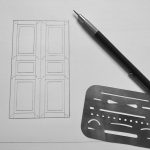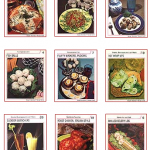We may receive a commission when you use our affiliate links. However, this does not impact our recommendations.
It is important to understand which classic tools should be bought and which shouldn’t. Because tools vary in quality, many are not worth owning. In fact, you must be careful and selective. The majority of second-hand tools are, for one or more of the following reasons, unsuitable for use.
Antique Tools
Beware of tools with prices that are determined by their appeal to collectors, or that have a high value as antiques. The word antique implies great age, but is only one of many factors that make a tool interesting to collectors. Some very old tools have less value than others that are much younger.
Antique tools have not only become collectible, they have also become a means of investment. As with fine art, antique furniture, and coins and stamps, novices should be very careful when buying antique tools. If you do not understand the circumstances that determine value, you could lose a great deal of money. It is very possible to pay much more for an item than it is worth—much more than you would receive if you decided to resell it.
Damaged Tools
Avoid tools that need major repairs. Repair work often has to be done by another craftsman who is capable of doing work that you yourself cannot do, for example, a machinist or a blacksmith. This means that the tool’s real price becomes the sum of what you paid for it plus the cost of the repair. And even if you can do the work yourself, your time has value and has to be factored into the total cost.
Classic Tools with Missing Parts
Most second-hand tools have not been used for years, even decades. In the meantime, they were either stored or left lying around. During this period of disuse tools lose removable parts. The more parts a tool has (such as a combination plane with all its separate cutters), the greater the chances that all the parts will not be with the tool when you acquire it.
If you do buy a tool that is incomplete, one solution is to duplicate the missing part. This is often more difficult and time consuming than making a repair. If the part is made of wood, you, as a woodworker, are more likely to be able to make it. Replacing a part that is made of forged or cast metal, however, requires skills that most woodworkers do not have.
Another solution is to find a replacement part. This means that you will not be able to use the tool until you find another identical, incomplete tool or a damaged tool that can be cannibalized. Once you have found this tool, you have to purchase it. The price of your one complete tool will be the sum of the two incomplete ones. The two purchases, plus the effort that went into finding them, seldom add up to a bargain.
Although I try to avoid buying incomplete tools, I occasionally find something that I want badly enough to justify ignoring my own advice. In anticipation of this possibility, I purchase loose items such as molding plane irons, ferrules, saw nuts, and various types of handles, and stockpile them. Most tool dealers have a “dollar box” where anything in the box is sold at a fixed price, often one dollar. Loose parts are often tossed into the dollar box. I never leave a shop without taking a moment to paw through the box’s contents.
–Mike Dunbar
The above post is an excerpt from Mike’s newly updated book, “Restoring, Tuning & Using Classic Woodworking Tools.” Beyond the basic knowledge you see here, the book includes in-depth chapters on:
- Cleaning and refinishing classic tools
- All types of wooden and metal-bodied planes
- Chisels and gouges
- Saws
- Braces and bits
- Suggested tool lists for beginner, intermediate and advanced shops
It’s a really fascinating read. Stay tuned to your e-mail newsletter for the release announcement!
–Popular Woodworking Editors
Here are some supplies and tools we find essential in our everyday work around the shop. We may receive a commission from sales referred by our links; however, we have carefully selected these products for their usefulness and quality.









